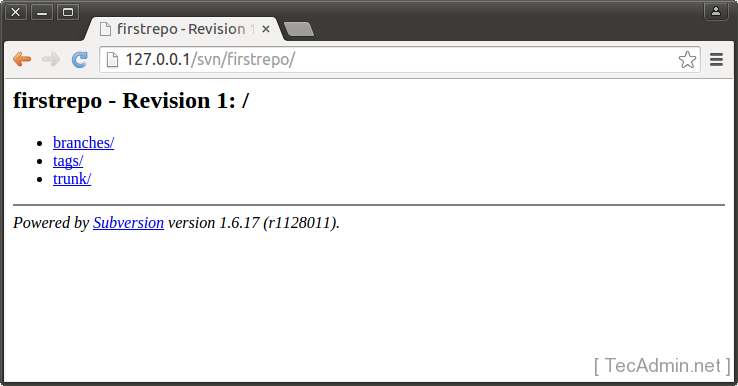How To Install Rapidsvn On Centos Server

RapidSVN is a cross-platform GUI front-end for the Subversion revision system written in C++ using the wxWidgets framework. This project also includes a Subversion. Fill out the URL field with the mirror url for the CentOS files to install. CentOS 6.6 – x86_64 – 64-bit. If your are not using a proxy server, just skip the other fields by highlighting the OK button using the arrows and pres Enter. If you are using a proxy server, please fill out the fields first.
Widely known as SVN, an open-source version control system used for storing the historical changes of source file and documents, manages it over a period. This post helps you to setup on. Install web server Update your system. Yum update Here we will install for the SVN repository. Yum -y install httpd httpd-tools Allow HTTP through firewall firewall-cmd --permanent --zone=public --add-service=http firewall-cmd --reload Start the Apache service. Systemctl start httpd.service Verify the Apache service by visiting. Install Subversion Once the Apache is installed, issue the following command to install subversion.
Yum -y install subversion subversion-tools mod_dav_svn Configure Subversion Once the installation is done, you can start to create repositories as per the requirements. In my case, i am creating /svn as the base and will create the repository in it.
Mkdir /svn Create the repository called “testrepo” svnadmin create /svn/testrepo Change the permission of the repository in such a way that Apache can read and write. Waves Ssl 4000 Collection Mac Crack. Chown -R apache:apache /svn/testrepo/ If you have SELinux enabled on the system, run the following command. Chcon -R -t httpd_sys_content_t /svn/testrepo/ chcon -R -t httpd_sys_rw_content_t /svn/testrepo/ Configure virtual host in Apache. Vi /etc/httpd/conf.d/svn.conf Place the following content.
On this page • • • • This tutorial explains how to setup and use an SVN repository server on CentOS. Before I start, let me explain what actually SVN represents and what it is used for. SVN is actually an abbreviation of SubVersion which had been created by the Apache software developer. It enables you to create and maintain your own repository and gives fine-grained access rights to a dedicated user.
It is very effective for controlling the versioning of files, documents or folders. It is very useful for any group or team that intends to start their own software projects. Preliminary Note For this tutorial, I am using CentOS 6.4 in the 32bit version. The end result will show you how a dedicated client can manage to access the SVN repository using any kind of operating system platform. 2. SVN Installation To start with a fresh SVN server, we need to install certain packages.